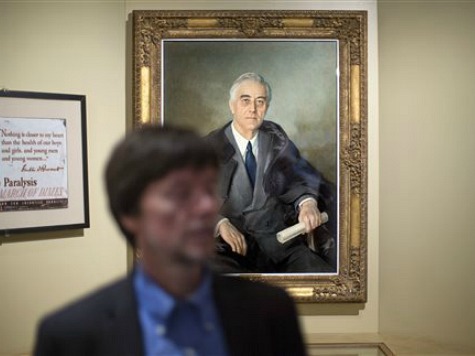By RAY HENRY
Associated Press
WARM SPRINGS, Ga.
Filmmaker Ken Burns said Saturday that he wants to tell the story of three of the most famous Roosevelts, their strengths and weaknesses, in an upcoming documentary on one of America’s most famous political families.
He previewed part of the 14-hour series that will air next year during a reunion of the extended Roosevelt family at the former polio clinic in rural Georgia that President Franklin Roosevelt purchased after coming to seek a cure for his crippled legs. Roosevelt built a home here known as the Little White House, where he died in 1945.
Burns’ film explores the political and family ties between President Theodore Roosevelt and Franklin Roosevelt and his wife, Eleanor. The filmmaker acclaimed for documentaries on the Civil War, baseball and World War II said he aimed for an honest portrayal of political figures who were sometimes reduced to caricatures.
Contrasting American ideals of heroism with those of the heroes of ancient Greece, Burns remarked that the Greeks “saw heroes as having very obvious strength but also very obvious and sometimes equal weaknesses.”
Defining a common legacy between the three figures is tricky since their lives span from 1858 to 1962. The political populism of Theodore Roosevelt–for example, his anti-monopoly stances and efforts to improve food safety and regulation–arguably found a new expression in the New Deal politics championed by Franklin Roosevelt to alleviate the suffering inflicted by the Great Depression.
The film follows Eleanor Roosevelt as she emerged from her role as first lady after Roosevelt’s death and successfully worked to adopt a United Nations declaration of human rights. She was the niece of Theodore Roosevelt and a distant relation to Franklin Roosevelt.
All three Roosevelts backed an expanded role for the central government, an unresolved issue in American politics. Congressional Republicans recently shut down much of the U.S. government in a failed attempt to derail big changes to the health insurance market made by a Democratic president.
The film shows flaws. Theodore Roosevelt encouraged a rebellion in Panama so the United States could secure the land needed for the Panama Canal. It discusses Franklin Roosevelt’s infidelity and the emotional abuse inflicted by Eleanor Roosevelt’s mother and an absent, alcoholic father.
Evidence of the history depicted in the film can be found on the surrounding campus. Roosevelt’s residence still has the bed where he died and a door has scratch marks believed to be from his dog. Burns saw the fast-driving 1938 Ford that allowed Roosevelt to escape his watchful bodyguards.
Tweed Roosevelt, the great-grandson of Theodore Roosevelt, said he was supportive of Burns’ work but could not judge the documentary since he had not seen all of it. While the Roosevelts have been extensively chronicled, it’s uncommon to consider the joint legacy of all three in a single work.
___
Follow Ray Henry on Twitter: http://twitter.com/rhenryAP.

COMMENTS
Please let us know if you're having issues with commenting.